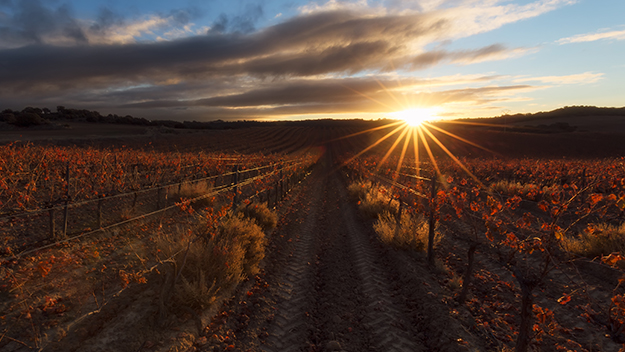Find your winery or vineyard
More than 10 Wineries and Vineyards for sale in DO Ribera del Duero

Winery with D.O Ribera del Duero
Modern well-built winery with connecting apartments, located in the region with D.O Ribera del Duero Burgos.

27 hectares of 27-year-old Tempranillo vines in a good area of Burgos
DO Ribera del Duero

Functional winery with vineyard in DO Ribera del Duero.
Winery with vineyards of the Tempranillo and Cabernet Sauvignon varieties, in the DO Ribera del Duero region.

Traditional winery for sale in DO Ribera del Duero.
Traditional style medium sized winery on Burgos land.

Spectacular winery with 10 hectares of organic vineyards.
Outside the DO Ribera del Duero

5 hectares of tempranillo vineyard in Pesquera de Duero.
DO Ribera del Duero.

Small winery in the heart of Ribera del Duero with 4 hectares of vineyards.
DO Ribera del Duero

Winery with 3 ha of vineyard and planting rights.
DO Ribera del Duero.

Medium size winery in DO Ribera del Duero.
Medium-sized winery with a plot of land of almost 10,000m² and a large production capacity, located in Ribera del Duero.

Large capacity winery in DO Ribera del Duero.
Fantastic 4,000m2 winery with a range of wine-making facilities, located in the heart of Ribera del Duero, in Burgos.

Winery of Tempranillo grape for sale in D.O. Ribera del Duero.
Medium-size family-run winery located in the Ribera del Duero part belonging to Valladolid. It was built in 2000 and almost all vineyards are rented.

Winery with an apartment in the best area of Burgos.
DO Ribera del Duero
Infographic of the Denomination of Origin

Change to imperial units (ft2, ac, °F)Change to international units (m2, h, °C)
D.O. year of foundation:
1982
Number of wineries (2017):
280
Total surface area:
22.040 ha54.461 ac
Maximum production allowed:
7.000 kg/ha6.245 lb/ac
Altitude of the vineyards:
Min: 750m
Max: 1.000m
Min: 2.461ft
Max: 3.281ft
Temperature:
Min: -20º
Max: 42º
Min: -4°F
Max: 108°F
Yearly hours of sun:
2.400
Yearly rainfall:
500 l/m246 l/ft2
DO Ribera del Duero
LOCATION AND HISTORY
It is in a settlement located in the confluence of the provinces of Burgos (which covers close to 60 municipalities), Soria (19), Segovia (4) and Valldolid (19). It starts with the East in San Esteban de Gormaz and extends up to Quintanilla de Onésimo in the West. This is Ribera del Duero, one of the most representative names in Spanish wine, up to the point in which its crops make up approximately 2% of the Spanish surface area. An area that has been favoured by a combination of land, microclimate and native grape. It was the Romans who understood its potential, although from the 10th century it was the Christian monks who were responsible for spreading the cultivation amongst the town. The energy and drive of the family viticulturists, with names such as Vega Sicilia, has resulted in the area becoming a worldwide reference point.
SOILS
Located on the large northern plateau of the Iberian Peninsula, this DO is found on large and smooth bedrock and partially covered by tertiary sediments. The key element in the quality of the soil of Ribera del Duero is the content of limestone and chalk, which makes up 33% of the composition in the West and over 50% in the East, up to the point of being practically white in some cases. The land varies considerably: the river banks and the lowlands are called countryside and terraces; the shallow foothills which are found above are slopes; and the steepest slopes, not fit for cultivation, are called hills or slopes, but planting is beginning even on these more recently.
CLIMATE
The climate of the valley of Duero balances the continental influences, such as the extreme winter cold of the plateau, with some Mediterranean characteristics, since it is generally warm and dry, it is protected by the cold winds and has moderate to low rainfall. The summers are hot and dry, but the summer temperatures lower considerably during the night due to the altitude, which enables the vines to cool down and rest in order to achieve an optimal taste. The frost is a constant concern from the end of autumn up to spring, since the temperatures very occasionally can drop to -20 ° C.
TYPE OF GRAPE
Tempranillo, also known as Tinta del País or Tinto Fino, is the main grape in the area and is planted in 85% of the vineyards. There are five authorised varieties, although three are historical examples: Merlot, Malbec, and Cabernet Sauvignon. Garnacha Tinta is mainly used for the production of rosé wines, whilst the white varieties are produced from Albillo, with a very good adaptation due to its early ripening. In general, the vines are very wholesome and give the wine a unique taste, most of all due to such an extreme climate.
Discover more wineries and vineyards for sale in these wine regions in Spain
Subscribe to our mailing list to receive news about wineries and vineyards.









